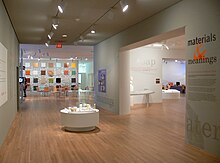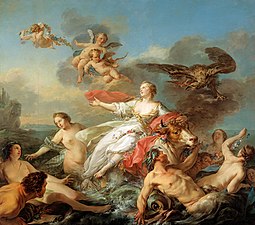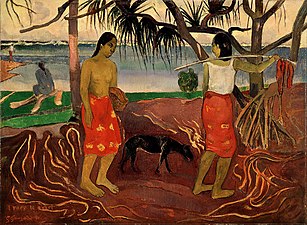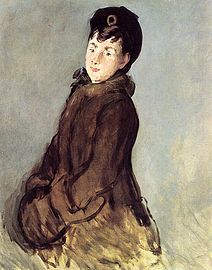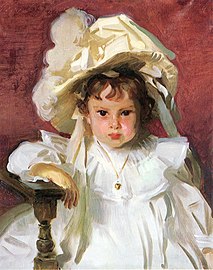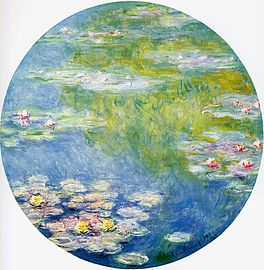
The Philadelphia Museum of Art (PMoA) is an art museum originally chartered in 1876 for the Centennial Exposition in Philadelphia. The main museum building was completed in 1928 on Fairmount, a hill located at the northwest end of the Benjamin Franklin Parkway at Eakins Oval. The museum administers collections containing over 240,000 objects including major holdings of European, American and Asian origin. The various classes of artwork include sculpture, paintings, prints, drawings, photographs, armor, and decorative arts.

The Wadsworth Atheneum is an art museum in Hartford, Connecticut. The Wadsworth is noted for its collections of European Baroque art, ancient Egyptian and Classical bronzes, French and American Impressionist paintings, Hudson River School landscapes, modernist masterpieces and contemporary works, as well as collections of early American furniture and decorative arts.
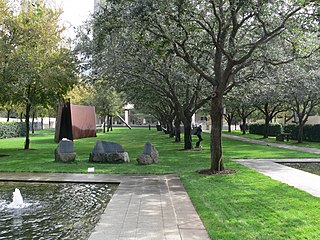
Opened in 2003, the Nasher Sculpture Center is a museum in Dallas, Texas, that houses the Patsy and Raymond Nasher collection of modern and contemporary sculpture. It is located on a 2.4-acre (9,700 m2) site adjacent to the Dallas Museum of Art in the Dallas Arts District.

The Minneapolis Institute of Art (Mia) is an arts museum located in Minneapolis, Minnesota, United States. Home to more than 90,000 works of art representing 5,000 years of world history, Mia is one of the largest art museums in the United States. Its permanent collection spans about 20,000 years and represents the world's diverse cultures across six continents. The museum has seven curatorial areas: Arts of Africa & the Americas; Contemporary Art; Decorative Arts, Textiles & Sculpture; Asian Art; Paintings; Photography and New Media; and Prints and Drawings.

The Baltimore Museum of Art (BMA) in Baltimore, Maryland, is an art museum that was founded in 1914. The BMA's collection of 95,000 objects encompasses more than 1,000 works by Henri Matisse anchored by the Cone Collection of modern art, as well as one of the nation's finest holdings of prints, drawings, and photographs. The galleries currently showcase collections of art from Africa; works by established and emerging contemporary artists; European and American paintings, sculpture, and decorative arts; ancient Antioch mosaics; art from Asia, and textiles from around the world.

The Crow Museum of Asian Art is a museum in downtown Dallas, Texas, dedicated to celebrating the arts and cultures of Asia including China, Japan, India, Korea, Nepal, Vietnam, Cambodia, Thailand, Indonesia, Myanmar and the Philippines, from ancient to the contemporary. The Crow Museum opened to the public on December 5, 1998, as a gift to the people and visitors of Dallas from Mr. and Mrs. Trammell Crow. The museum is a member of the Dallas Arts District. The interior was designed by Booziotis and Company Architects of Dallas.

The Museum of Fine Arts, Houston (MFAH), is an art museum located in the Houston Museum District of Houston, Texas. With the recent completion of an eight-year campus redevelopment project, including the opening of the Nancy and Rich Kinder Building in 2020, it is the 12th largest art museum in the world based on square feet of gallery space. The permanent collection of the museum spans more than 6,000 years of history with approximately 70,000 works from six continents. In 2023, the museum received over 900,000 visitors, making it the 20th most-visited museum in the United States.

The Bilbao Fine Arts Museum is an art museum located in the city of Bilbao, Spain. The building of the museum is located entirely inside the city's Doña Casilda Iturrizar park.

The Meadows Museum, nicknamed "Prado on the Prairie", is a two-story, 66,000 sq. ft.art museum in Dallas, Texas on the campus of Southern Methodist University (SMU). Operating as a division of SMU's Meadows School of the Arts, the museum houses one of the largest and most comprehensive collections of Spanish art outside of Spain, with works dating from the 10th to the 21st centuries.
Larry Bell is an American contemporary artist and sculptor. He is best known for his glass boxes and large-scaled illusionistic sculptures. He is a grant recipient from, among others, the National Endowment for the Arts and the Guggenheim Foundation, and his artworks are found in the collections of many major cultural institutions. He lives and works in Taos, New Mexico, and maintains a studio in Venice, California.
Renée Stout is an American sculptor and contemporary artist known for assemblage artworks dealing with her personal history and African-American heritage. Born in Kansas, raised in Pittsburgh, living in Washington, D.C., and connected through her art to New Orleans, her art reflects this interest in African diasporic culture throughout the United States. Stout was the first American artist to exhibit in the Smithsonian's National Museum of African Art.

Lowe Art Museum is the art museum of the University of Miami in Coral Gables, Florida. The museum is located on the campus of the University of Miami and is accessible by Miami Metrorail at University Station.

The Tucson Museum of Art and Historic Block (TMA) is an art museum and art education institution located in the Presidio District of downtown Tucson, Arizona. The museum comprises 74,000-square-feet of exhibition space over a four-acre city block that includes a contemporary main museum and 19th C. historic homes, including the Cordova House (1848), that have been adapted for reuse as the museum restaurant, pottery school, and galleries.
Williamson Gerald Bywaters (1906–1989), known as Jerry Bywaters, was an American artist, university professor, museum director, art critic and a historian of the Texas region. Based in Dallas, Bywaters worked to elevate the quality of Texas art, attracting national recognition to the art of the region.
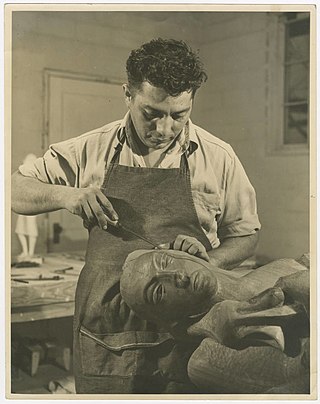
Octavio Medellín (1907–1999) was a Mexican American sculptor and teacher, best known for the Mexican-influenced sculptures that he created in Texas in the first half of his career. In the 1950s, 1960s, and 1970s, his art became more abstract.

Coreen Mary Spellman (1905–1978) was an American printmaker, painter, and teacher active in Texas from the 1920s until her death in 1978.
The Dallas Nine was a group of Dallas, Texas artists active between 1928 and 1945.
Everett Franklin Spruce was a painter, museum professional, and arts educator based in Texas. He was widely recognized as one of the earliest regional visual artists to have embraced modernism in his interpretations of the Southwestern aesthetic. As a member of the Dallas Nine, he contributed to developing a stylistic lexicon that captured realistic and unidealized perspectives of the region, shifting away from the “Old South” view of Texas. Regional nature dominated his oeuvre, and a wide array of artistic movements, music, and literature influenced his renderings of it.

Olin Herman Travis (1888–1975) was an American painter and arts educator active for much of the 20th-century. He spent most of his life working in Texas, though he and his first wife Kathryne Hail Travis routinely traveled to Arkansas. In addition to his paintings, Travis is largely known for several public murals in Dallas and for working with Kathryne to co-found the Dallas Art Institute (DAI) – the first major art institution in the south to offer artistic instruction in a variety of fields.
The Dallas Art Institute (1926-1946) was the first art school to offer instruction in a variety of fields in the southern United States. It was founded in 1926 by artists Olin H. Travis and Kathryne Hail Travis and operated until it was closed by the Dallas Museum of Art trustees in 1946.







